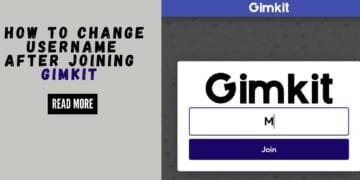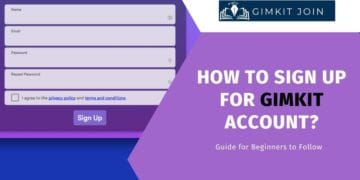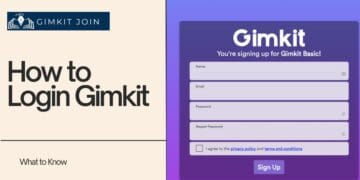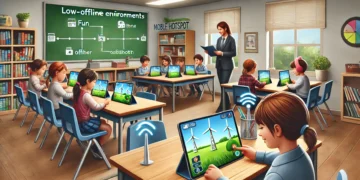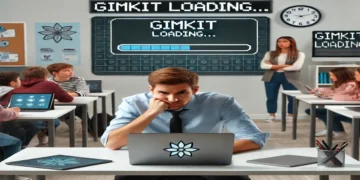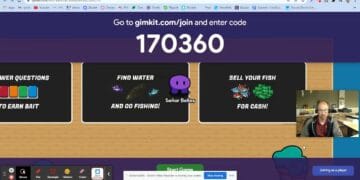When you think of Gimkit, you probably picture fast-paced math races or science reviews. But what about ELA? The truth is, Gimkit is a versatile EdTech tool with a surprising amount of potential for the English Language Arts classroom. It’s a platform that can turn everything from grammar drills to literary analysis into a high-energy game. It’s time to move beyond the flashcard and into a new era of interactive learning. For more on the benefits of gamified learning, ISTE is a valuable resource for educators.
In this guide, we’ll give you specific, creative strategies to use Gimkit for ELA, covering everything from basic skills like vocabulary and grammar to complex topics like literature and even creative writing.
The Foundation: Vocabulary & Grammar
Gimkit’s fast-paced nature and immediate feedback make it perfect for building foundational ELA skills. It turns rote memorization into a competitive, engaging activity that students can’t get enough of.

Actionable Strategies
- Synonym Sprint: Create a kit where the question is a vocabulary word, and the multiple-choice options are its synonyms. The students’ race to find the right answer reinforces word relationships at speed. This makes Gimkit vocabulary games a dynamic alternative to flashcards.
- Grammar Grind: Use the Text Input question type to challenge students to spell difficult words, correct a sentence’s punctuation, or identify the correct verb tense. This moves beyond simple multiple-choice, turning Gimkit grammar review into a precision-based challenge. For a comprehensive guide to grammar rules, a resource like the Purdue Online Writing Lab (OWL) is an excellent tool for both teachers and students.
- Figurative Language Frenzy: Create a kit with questions that present a sentence and ask students to identify the figurative language at play. For example, a question might be, “What is the literary device in ‘The sun smiled at me’?”
The Core: Literature & Reading Comprehension
Gimkit forces students to recall and analyze information from a text. By turning reading comprehension into a game, you’re encouraging a deeper, more intentional interaction with the material.

Actionable Strategies
- Quote Quest: Before a class discussion, create a kit with questions that include key quotes from the reading. Students must identify the speaker or the context of the quote. This ensures everyone has read the material and is prepared for discussion.
- Character Close-Up: Use the image upload feature to include a picture of a character (or a historical figure from a non-fiction text). The questions can then ask students to identify the character’s motivation, internal conflicts, or relationship to others.
- Literary Elements Ladder: Build a kit that covers concepts from plot diagrams to character archetypes. Students can use this as a study guide to prepare for a unit exam, with the competitive element keeping them engaged. This is an effective way to use Gimkit for literature analysis. For a deeper understanding of literary devices and their interpretation, ReadWriteThink offers a comprehensive and teacher-friendly guide.
The Creative Corner: Creative Writing & Storytelling
This is where Gimkit truly shines in the ELA classroom. It’s a unique tool for collaborative, long-form creative projects that traditional quizzes can’t touch.

Actionable Strategies
- Collaborative Storytelling (KitCollab): Start a KitCollab with a single, intriguing question that acts as a writing prompt (e.g., “What was behind the hidden door?”). As students submit their own answers as new questions, you can approve the best plot points. The class then votes on which path the story will take by answering the new questions. For more creative ideas shared by other teachers, check out our guide on Gimkit community tips.
- Sensory Prompts: Create a kit with open-ended questions like, “What does the forest smell like after the rain?” or “Describe the sound of a crowded marketplace.” Use the Text Input feature for students to submit their answers. The in-game reward becomes a creative incentive for Gimkit creative writing exercises.
This intentional use of Gimkit transforms a simple game into a powerful teaching tool for the most complex ELA classroom skills. For more advanced features, be sure to check out our guide on Gimkit’s hidden features.
Conclusion
It’s clear that Gimkit is far more than just a tool for basic memorization. It’s a versatile EdTech platform that, when used with intention, can elevate your ELA classroom. By transforming everything from vocabulary drills to creative writing into a gamified learning experience, you can foster a love for language and literature while building crucial skills. To see how Gimkit compares to other popular gamified learning tools, read our detailed comparison of Gimkit vs. Blooket for a deeper breakdown.






